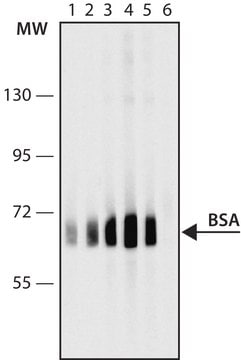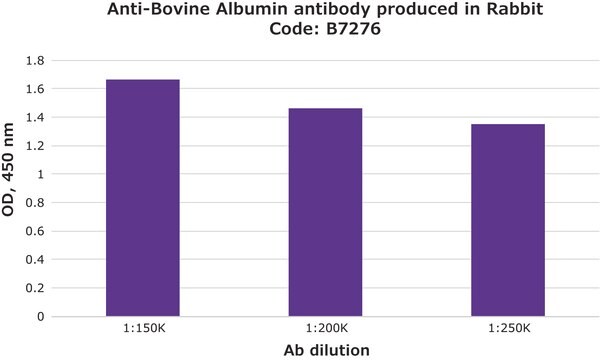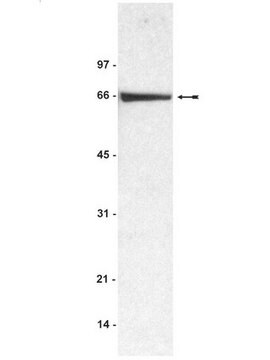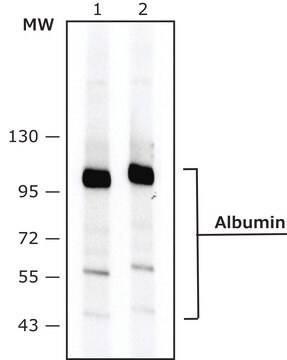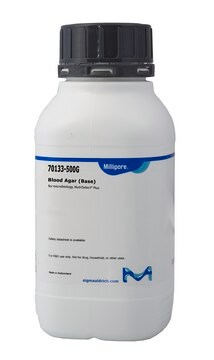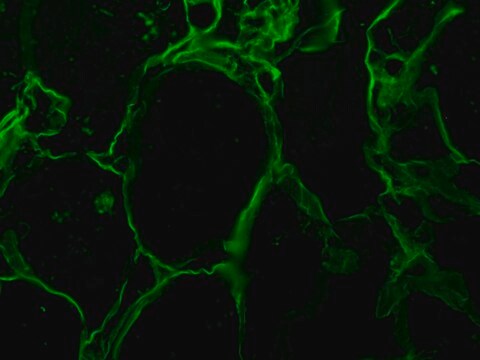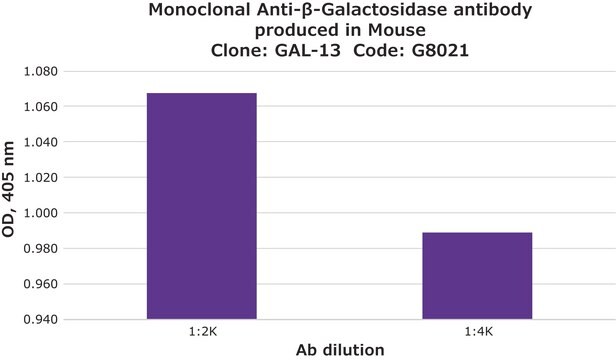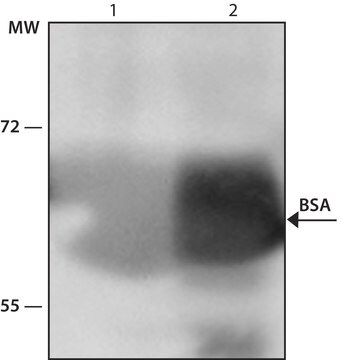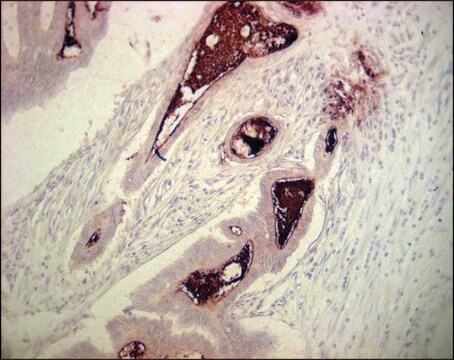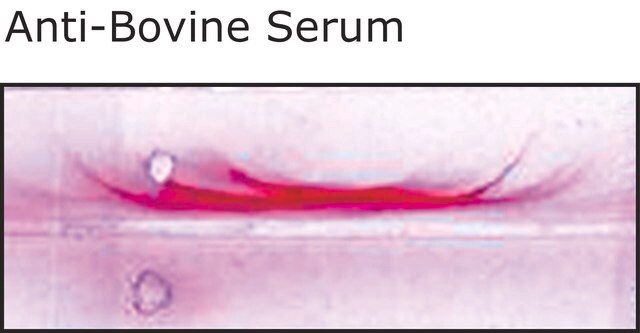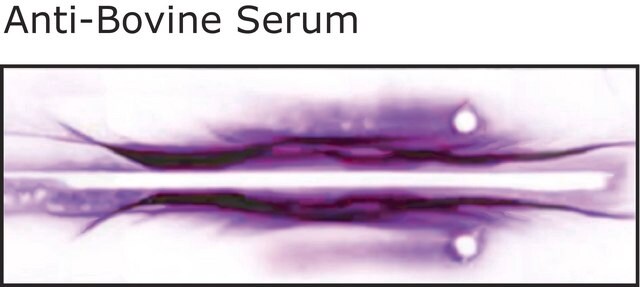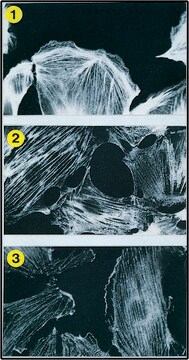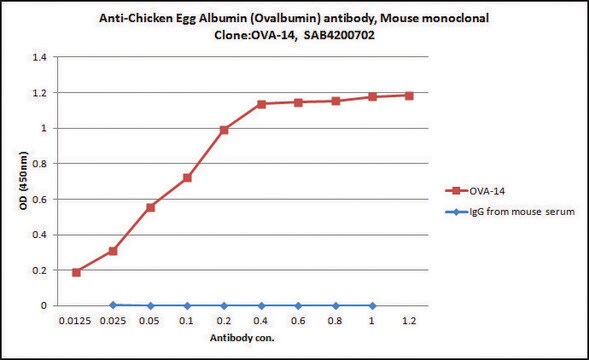B2901
Monoclonal Anti-Bovine Serum Albumin antibody produced in mouse
clone BSA-33, ascites fluid
Sinonimo/i:
Anti Bsa, Anti-Bsa Antibody, BSA Antibody - Monoclonal Anti-Bovine Serum Albumin antibody produced in mouse, Bsa Antibody, Anti-Albumin, bovine serum, Anti-BSA
About This Item
Prodotti consigliati
Origine biologica
mouse
Livello qualitativo
Coniugato
unconjugated
Forma dell’anticorpo
ascites fluid
Tipo di anticorpo
primary antibodies
Clone
BSA-33, monoclonal
contiene
15 mM sodium azide
Reattività contro le specie
bovine (high), turkey (low), canine (low), sheep (high), horse (low), goat (high)
Non deve reagire con
human, hamster, rabbit, donkey, guinea pig, mouse, rat, chicken, feline, pigeon, pig
tecniche
dot blot: suitable
indirect ELISA: 1:1,000
Isotipo
IgG2a
Condizioni di spedizione
dry ice
Temperatura di conservazione
−20°C
modifica post-traduzionali bersaglio
unmodified
Informazioni sul gene
bovine ... Alb(280717)
chicken ... Alb(396197)
dog ... Alb(403550)
horse ... Alb(100034206)
human ... ALB(213)
mouse ... Alb(11657)
pig ... Alb(396960)
rabbit ... Alb(100009195)
rat ... Alb(24186)
sheep ... Alb(443393)
Descrizione generale
Specificità
Monoclonal Anti-Bovine Serum Albumin antibody is specific for SDS-denatured and reduced BSA. While the product is highly cross reactive with goat and sheep serum; it has a lower affinity for dog, turkey and horse serum albumins.
Immunogeno
Applicazioni
- enzyme linked immunosorbent assays (ELISA)
- competitive ELISA
- immunodot blot
- western blotting
- immunoaffinity purification or adsorption of BSA from biological fluids.
Azioni biochim/fisiol
Esclusione di responsabilità
Non trovi il prodotto giusto?
Prova il nostro Motore di ricerca dei prodotti.
Codice della classe di stoccaggio
12 - Non Combustible Liquids
Classe di pericolosità dell'acqua (WGK)
nwg
Punto d’infiammabilità (°F)
Not applicable
Punto d’infiammabilità (°C)
Not applicable
Scegli una delle versioni più recenti:
Possiedi già questo prodotto?
I documenti relativi ai prodotti acquistati recentemente sono disponibili nell’Archivio dei documenti.
I clienti hanno visto anche
Il team dei nostri ricercatori vanta grande esperienza in tutte le aree della ricerca quali Life Science, scienza dei materiali, sintesi chimica, cromatografia, discipline analitiche, ecc..
Contatta l'Assistenza Tecnica.